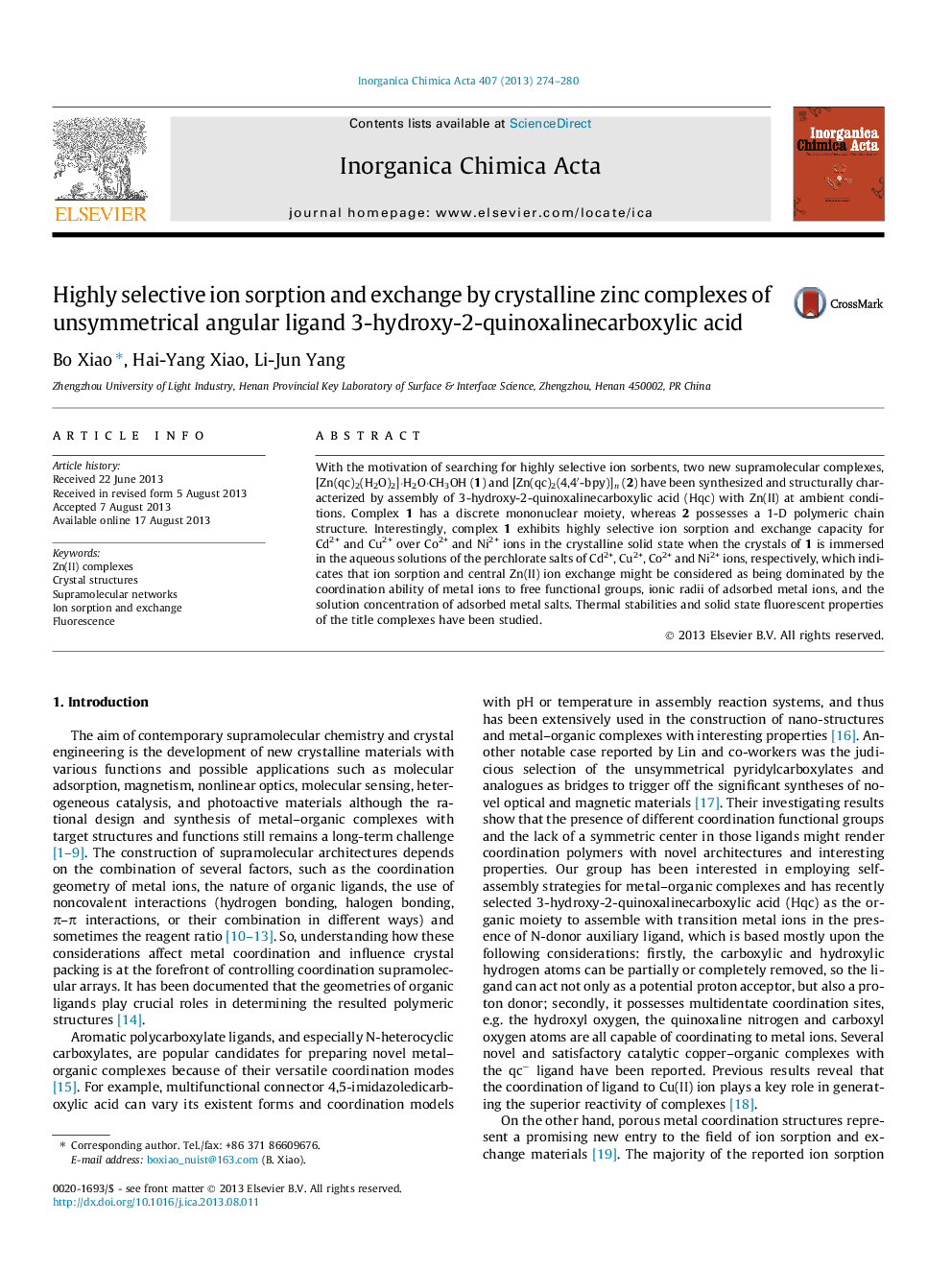| کد مقاله | کد نشریه | سال انتشار | مقاله انگلیسی | نسخه تمام متن |
|---|---|---|---|---|
| 1312283 | 1499180 | 2013 | 7 صفحه PDF | دانلود رایگان |

• Synthesis and structure elucidation of two new ZnII complexes.
• The influence of co-ligand on the product formations and ion sorption and transition metal ion exchange behaviors.
• Thermal study of the complexes.
With the motivation of searching for highly selective ion sorbents, two new supramolecular complexes, [Zn(qc)2(H2O)2]·H2O·CH3OH (1) and [Zn(qc)2(4,4′-bpy)]n (2) have been synthesized and structurally characterized by assembly of 3-hydroxy-2-quinoxalinecarboxylic acid (Hqc) with Zn(II) at ambient conditions. Complex 1 has a discrete mononuclear moiety, whereas 2 possesses a 1-D polymeric chain structure. Interestingly, complex 1 exhibits highly selective ion sorption and exchange capacity for Cd2+ and Cu2+ over Co2+ and Ni2+ ions in the crystalline solid state when the crystals of 1 is immersed in the aqueous solutions of the perchlorate salts of Cd2+, Cu2+, Co2+ and Ni2+ ions, respectively, which indicates that ion sorption and central Zn(II) ion exchange might be considered as being dominated by the coordination ability of metal ions to free functional groups, ionic radii of adsorbed metal ions, and the solution concentration of adsorbed metal salts. Thermal stabilities and solid state fluorescent properties of the title complexes have been studied.
Two new supramolecular complexes, [Zn(qc)2(H2O)2]·H2O·CH3OH (1) and [Zn(qc)2(4,4′-bpy)]n (2) have been synthesized with the aim of exploiting highly selective ion sorbents. Highly selective ion sorption and exchange capacity of 1 indicates that ion sorption and central Zn(II) ion exchange might be dominated by the coordination ability of metal ions to free functional groups, ionic radii of adsorbed metal ions, and the solution concentration of adsorbed metal salts.Figure optionsDownload as PowerPoint slide
Journal: Inorganica Chimica Acta - Volume 407, 1 October 2013, Pages 274–280